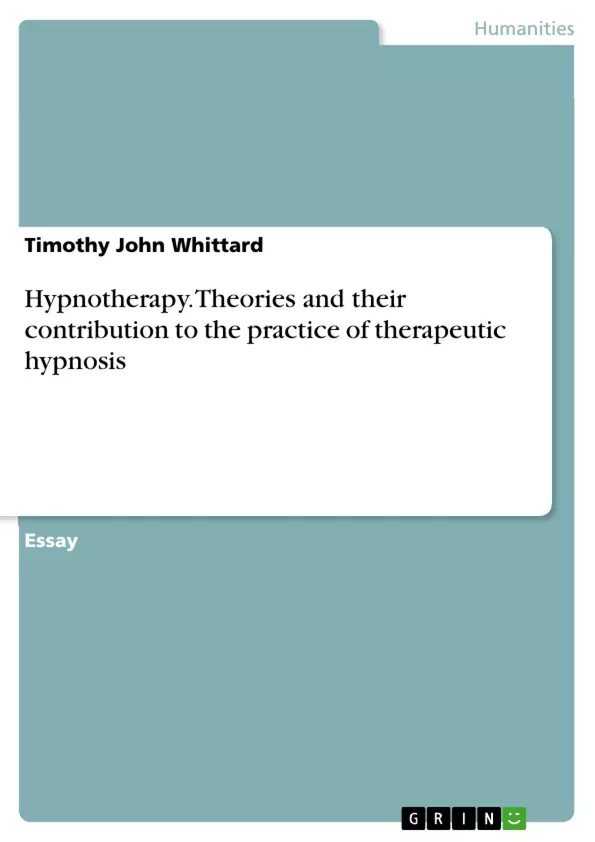The following essay aims to discuss and explore the different personalities and the key figures relating to hypnotherapy and the seminal works attached to this subject matter and the content and implications of these eminent and ground-breaking works. This essay will explore a number of characters identified within the course material and will be referenced by a range of academic sources. With regard to the key figures involved and their seminal works I shall be focusing on six of the known and identified individuals who have contributed heavily to the subjects of hypnosis and hypnotherapy.
Inhaltsverzeichnis (Table of Contents)
- Introduction
- Aristotle
- Pavlov
- Watson
- Thorndike
- Skinner
- Wolpe
- Conclusion and Summary
Zielsetzung und Themenschwerpunkte (Objectives and Key Themes)
This essay aims to explore the key figures and seminal works associated with hypnotherapy, highlighting their contributions to the field. It will focus on six prominent individuals who have significantly impacted the development of hypnosis and hypnotherapy.
- The historical development of therapeutic hypnosis.
- The impact of key figures on the evolution of hypnotherapy.
- Theories and concepts associated with different figures in behavioural psychology.
- Applications of behavioural psychology principles in hypnotherapy.
- The evolution of therapeutic techniques and their impact on clinical practice.
Zusammenfassung der Kapitel (Chapter Summaries)
- Introduction: This section introduces the essay's objective to explore prominent figures and their contributions to hypnotherapy. It outlines the essay's scope and the key figures that will be discussed.
- Aristotle: This section examines Aristotle's early contributions to understanding human memory and its influence on behaviour and feelings. It highlights his pioneering ideas about memory storage, which later formed the basis for modern therapeutic hypnosis.
- Pavlov: This section focuses on Pavlov's famous experiments with dogs and his theory of conditioning. It emphasizes his contributions to understanding the physiological mechanisms underlying hypnosis and his pioneering work on relaxation and conditioning techniques.
- Watson: This section explores John Watson's work on behaviourism and his focus on studying human and animal behaviours through conditioning. It highlights Watson's famous "Little Albert" experiment and his belief that innate reactions and conditioning drive human behaviour.
- Thorndike: This section discusses Thorndike's "Law of Effect" and his experiments with animals, particularly cats. It explores his theory that behaviours followed by positive consequences are more likely to be repeated, and how this principle relates to managing addiction and dependence.
- Skinner: This section delves into Skinner's contributions to operant conditioning and his development of the "Skinner Box" to study animal behaviour. It examines his ideas about reinforcement and punishment in shaping behaviour, as well as the potential limitations of his approach when applied to humans.
- Wolpe: This section explores Wolpe's work on desensitization and his development of techniques to treat anxiety. It emphasizes his use of a "sliding gradient" to assess and manage patient anxieties and his application of relaxation techniques to reduce pain and discomfort.
Schlüsselwörter (Keywords)
This essay focuses on the key figures, theories, and concepts associated with behavioural psychology and its application to therapeutic hypnosis. It explores prominent figures like Aristotle, Pavlov, Watson, Thorndike, Skinner, and Wolpe, highlighting their contributions to understanding memory, conditioning, behaviourism, and desensitization. The essay delves into themes such as classical and operant conditioning, relaxation techniques, and the development of therapeutic techniques to address anxiety and other psychological conditions.
- Quote paper
- Timothy John Whittard (Author), 2018, Hypnotherapy. Theories and their contribution to the practice of therapeutic hypnosis, Munich, GRIN Verlag, https://www.grin.com/document/476687



